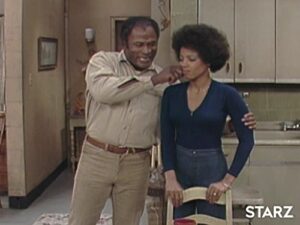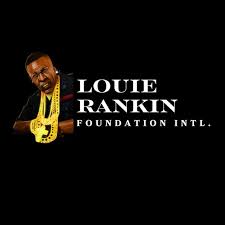Lesser-Known Athlete Scandals That Changed Their Sports
Sports history is full of stories about heroes and legends, but it’s the more surprising, controversial moments that can truly change a sport forever. Behind the scenes, players disrupt expectations, break rules, and sometimes rewrite the game itself. The lesser-known athlete scandals that changed their sports have a way of exposing both human flaws and the limits of tradition. While they may not always steal the spotlight, their ripple effects are undeniable. From contracts voided for striking out legends to medals stripped in shocking twists, these forgotten moments demand a revisit.
Below, we explore 10 fascinating scandals that altered the trajectory of their respective sports, proving that sometimes, the biggest drama happens off the field.
The 1904 Marathon Cheater Who Got Caught in a Car
One of the wildest scandals came during the 1904 Olympic marathon, where runner Fred Lorz appeared to win the race. However, it turned out he had hitched a ride for almost 11 miles of the course in a car! After crossing the finish line, he briefly celebrated before, unsurprisingly, being exposed.
His excuse? He claimed it was a “joke,” saying he had no intention of taking the gold medal. While Lorz’s name lives on in infamy, this incident prompted stricter regulations to ensure fair play in racing events. Interestingly, this scandal highlighted the challenges of monitoring long competitions in the early 20th century.
Diego Maradona’s Famous “Hand of God”
Diego Maradona is no stranger to iconic sports moments, but his notorious “Hand of God” goal against England in the 1986 World Cup remains controversial. During the match, Maradona punched the ball into the net, a clear violation of the rules.
The referee failed to see the infraction, allowing the goal to stand. England was outraged, accusing Maradona of blatant cheating. Maradona, however, cheekily referred to the play as divine intervention, coining the now-famous phrase. The incident sparked years of debate over refereeing and instant replay, eventually pushing FIFA to adopt VAR (Video Assistant Referee) technology.
Jackie Mitchell, Babe Ruth, Lou Gehrig, and Baseball’s Gender Barrier
Jackie Mitchell made headlines in 1931 when she struck out both Babe Ruth and Lou Gehrig during a spring training exhibition game. At just 17 years old, her performance grabbed national attention. Baseball fans were stunned, with many questioning if Ruth and Gehrig went easy on her or if she was truly that skilled. Either way, her feat was a direct challenge to the belief that women couldn’t compete with men on the professional stage.
The fallout was swift. Kenesaw Mountain Landis, Major League Baseball’s first commissioner, quickly voided Mitchell’s professional contract. His justification? Baseball was “too strenuous” for women. The decision wasn’t just a blow to Mitchell’s career; it changed the professional sports world’s relationship with co-ed athletics.
Tonya Harding, Nancy Kerrigan, and Figure Skating’s Dark Chapter
The 1994 attack on Nancy Kerrigan thrust figure skating into the media’s glare. Kerrigan, the favorite to win gold at the Winter Olympics, was assaulted by a man hired by the ex-husband of her rival, Tonya Harding.
The scandal consumed the sport. Harding claimed she wasn’t involved in planning the attack, but her reputation tanked as the investigation unfolded. Though she still competed in the Olympics, her name became synonymous with infamy in skating. This event forever changed how figure skating was portrayed in the media, becoming as much about the drama as the artistry.
Rosie Ruiz and the Fake Boston Marathon Win
Rosie Ruiz’s 1980 Boston Marathon “win” stunned the world—for less than a week. Clocking what appeared to be one of the fastest times in women’s marathon history, Ruiz could barely answer basic questions about the course during post-race interviews.
Investigators discovered she had joined the race a mile before the finish line. Unsurprisingly, her title was revoked, but her audacity created an unforgettable moment in sports.
Bat Tampering and the Corked Bat Incident
One of the most talked-about bat tampering scandals in baseball involved Sammy Sosa and his infamous corked bat in 2003. During a game against the Tampa Bay Devil Rays, Sosa’s bat shattered on a swing, revealing it had been filled with cork, a tactic believed to give hitters an unfair advantage by making the bat lighter and easier to control.
Sosa claimed the altered bat was meant for batting practice and not regular-season games, but the damage to his reputation was already done. The incident led to a seven-game suspension, intense scrutiny of other players’ equipment, and a reexamination of how bats were inspected and regulated. This controversy forced MLB to strengthen its stance on equipment checks, reminding fans and athletes that even seemingly minor infractions could undermine the integrity of the game. Even today, these scandals contributed to lasting myths in baseball, such as the idea that heavier bats are thicker and therefore better at power-hitting.
Lance Armstrong’s Doping Empire
Cycling was reshaped by the exposure of Lance Armstrong’s extensive doping program. Once celebrated as a seven-time Tour de France winner, Armstrong’s fraud unraveled through years of investigation.
His strategic use of performance-enhancing drugs helped him dominate the sport, but he also built a culture of silence within his team to keep the secret. The fallout from Armstrong’s admission in 2012 tarnished careers and reputations, but it also led to stronger anti-doping protocols in cycling and other sports.
Collusion in Major League Baseball’s Free Agency
During the 1980s, Major League Baseball owners colluded to suppress player salaries by collectively refusing to sign top free agents. The practice wasn’t obvious at first, but patterns emerged when superstar players struggled to secure deals.
An arbitration ruling in 1987 ultimately exposed the scheme, forcing MLB owners to pay hefty penalties. This scandal reshaped free agency rights and ignited broader discussions about fair labor practices in sports. Today’s megadeals owe something to this era!
The Mystery of Danny Almonte’s Age
Little League Baseball got a dose of drama in 2001 with pitcher Danny Almonte. Dominating his peers with a blazing fastball, Almonte led his team deep into the Little League World Series.
Records, however, showed the player was actually 14 years old—not 12, the maximum eligible age. While his parents and coach faced significant backlash, the scandal highlighted loopholes in youth sports verification processes. It also shifted attention to how children and their families face pressure to succeed in competitive sports.
The East German Doping Machine
The systematic doping program in East Germany during the Cold War was extensive, afflicting various sports. The nation’s government secretly administered performance-enhancing drugs to athletes, many of whom were unaware of what they were being given.
Though the truth only fully emerged after the fall of the Berlin Wall, the damage to athletes’ health and careers was irreversible. It served as a cautionary tale for modern doping scandals, prompting global anti-doping agencies to take action.
Sports Legends and Lasting Consequences
Scandals have a way of shaping public perception. Some fade into history, while others transform sports forever. These lesser-known athlete scandals that changed their sports remind us that every shocking revelation is rooted in human ambition, error, and resiliency.
While scandals may tarnish individuals, they often spark necessary changes and deeper conversations. These moments refuse to be forgotten—not just because of the drama, but because they forced sports to evolve. It’s the mix of brilliance and chaos that makes athletes (and their controversies) so captivating to watch.
Share this content:














Post Comment